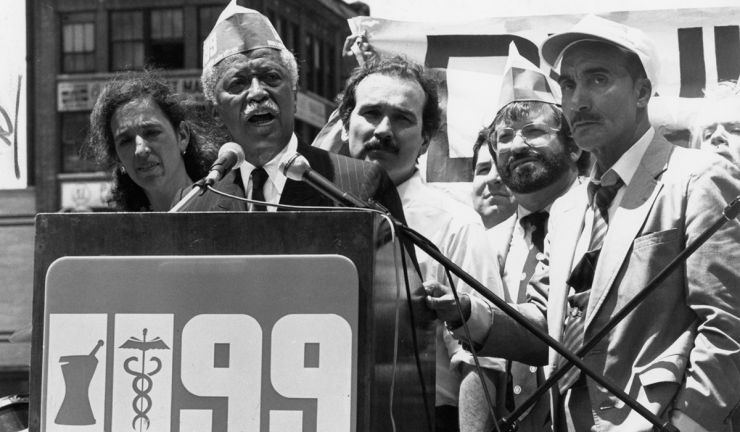Remembering 1199’s History: 1199 Paper Hat Became a Symbol
January 19, 2021

In the 1960s, the blue and white 1199 paper hats became a powerful symbol of economic and racial justice. The hat was worn during the hospital organizing drives in the early 1960s, but it began to symbolize progressive struggles especially after the historic 1963 March on Washington for Jobs and Freedom.
At the March, Joe Walker, an 1199 News staffer at the time, was standing near the Lincoln Memorial where the speeches were being delivered. He spotted Joan Baez, the folksinger who sang at the rally. “Joan, will you wear this hat?” he asked. “I want to take a picture.” She gladly agreed.
Over the years, artists, celebrities and elected officials gladly donned the hat as a symbol of their support for workers and people of color.
One of those leaders of the Black Liberation Movement was Stokely Carmichael who had been arrested in the 1960s at a sit-in during 1199’s hospital organizing campaign. In the summer of 1966, Carmichael joined Dr. Martin Luther King Jr. and other leaders in the March Against Fear from Memphis, Tennessee, to Jackson, Mississippi to encourage registration and voting.
During the march, in which Carmichael called for “Black Power,” he was photographed wearing the 1199 blue and white hat.
In 1969 during the Charleston hospital workers organizing drive, NAACP supporters scheduled a solidarity march. When they were told that the hats would not arrive in time for the march, a representative said, “No, no, no, we'll wait, because we want to have the hats.” The march was rescheduled.

